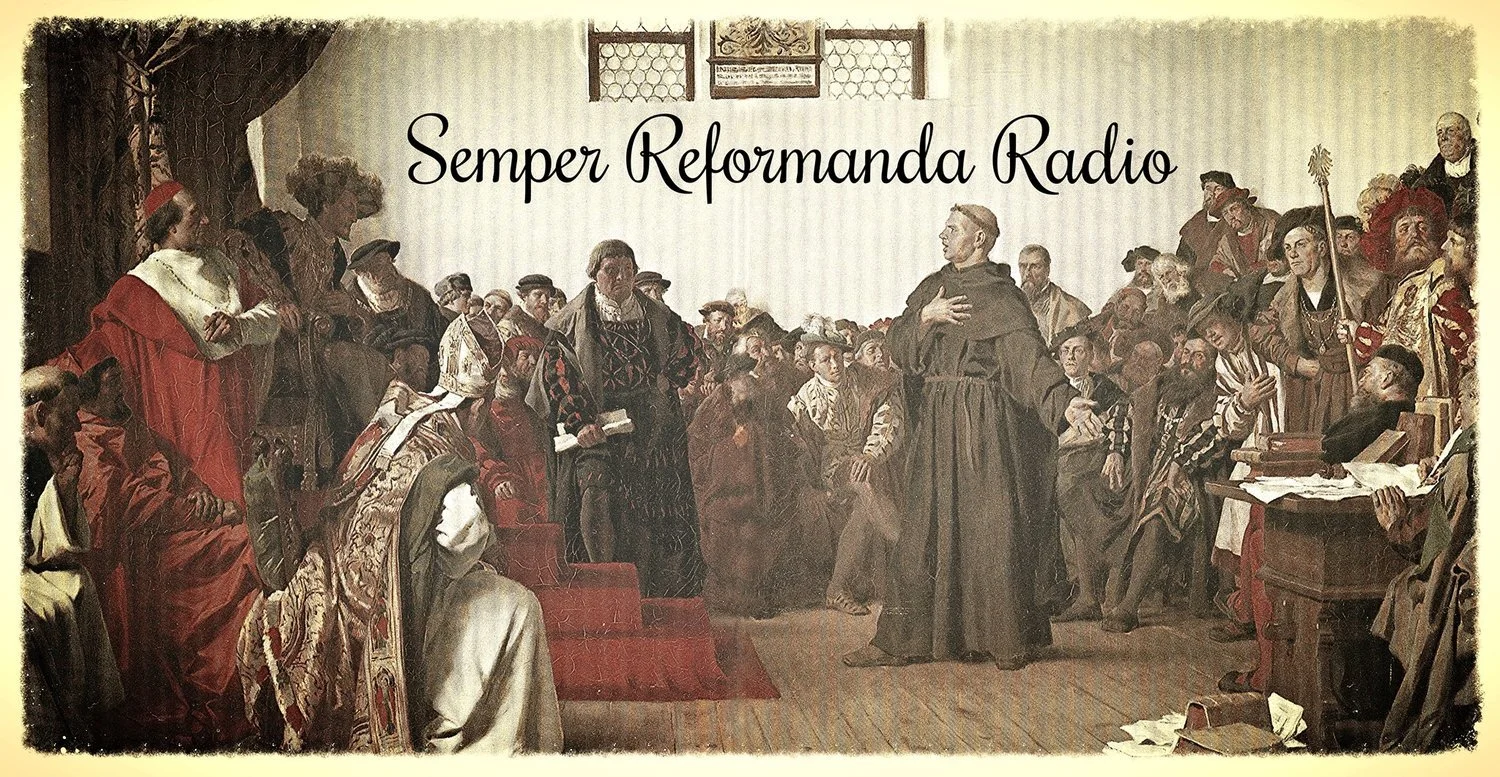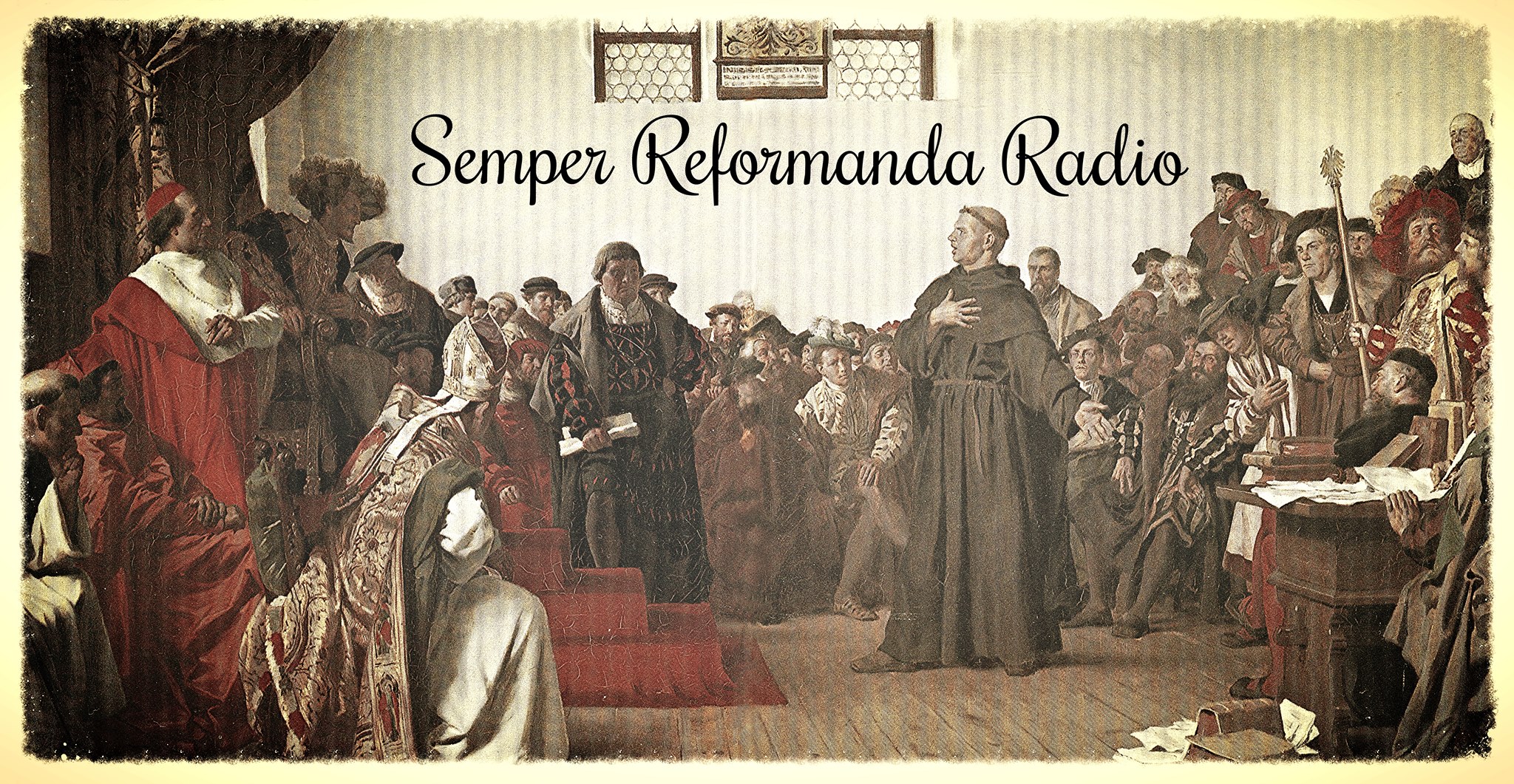“Pope Francis Calls For ‘New World Order” After The Pandemic” by Thomas D. Williams Ph.D.
“Rachel Levine’s Imminent Confirmation proves Transgenderism Is America’s New State Religion,” Revolver, 2/26/2021.
“Mr Potato Head to lose “Mr” title in gender-neutral rebrand,” BBC.
“‘Transgender Mania’ is a Sumptom of West’s Cultural Collapse,” CNS News, 11/3/2015.
"Pope Calls on faithful to help migrants achieve 'new life'"
"Bannon: Catholic Church needs 'illegal aliens to fill the churches," Washington Post, 9/7/2017
"Bannon: Catholic Church One of the 'Worst Instigators of Open Borders Policy," Newsmax, 6/17/2018
“Romanizing America Through Illegal Immigration,” by Pastor Ralph Ovadal
Christ in the Wild Ministries, the homepage of Ryan Denton’s preaching ministry.
“Trump acquitted, denounced in historic impeachment trial” by Lisa Mascaro, Eric Tucker and Mary Clare Jalonick
In this episode, we revisit the propensity of Roman Catholic, Reformation and Protestant scholarship to see only one strike of the Stone of Daniel 2 and one Judgment scene in Daniel 7—a very dangerous oversight of Daniel’s clear description of two actual judicial movements in each chapter, one against Rome (the feet of Iron and Clay) and one against the Little Horn (the Iron, the Brass, the Clay, the Silver and the Gold together). We then review several passages of Scripture that show Jesus’ earthly kingdom is subsequent to, and not concurrent with, the Heavenly Kingdom He came announcing under the 4th empire (Rome). Rather, it is a satanic earthly empire that enjoys dominion on earth as Christ and His saints reign in Heaven. Christ and His saints do not take on an earthly dominion until that Heavenly Kingdom administers the second strike of the Stone against the dominion of the Little Horn. Finally, to contextualize our study of the Seven Seals of Revelation, we visit the first five throne room scenes of Revelation and show that in those scenes, Jesus is aggregating to Himself in Heaven over time the community of His saints as the Jews, the Romans, the Devil, the Beast and the False Prophet sequentially persecute and attempt to mislead generations of God’s people. The first Throne Room scene in Heaven precedes the first strike of the Stone—the breaking of the Seals—and the fifth Throne Room scene precedes the second strike of the Stone—the destruction of the Little Horn, the Beast of Revelation 13.
“The New Domestic War on Terror is Coming” by Glen Greenwald.
John MacArthur, Sermon from 1/17/2021
A Baptist study on the Westminster Larger Catechism, Questions 41-42, held at the Old Paths Christian Church on 13 January 2020. Topics include Christology and the Trinity; ancient creeds and councils; Nestorianism and other ancient heresies; Old Testament saints; differences between the Old and New covenants; Greek philosophy, essentialism, realism, metaphysics and existence; sacred namers and cults; biblical apologetics and argumentation; and more!
Q. 41. Why was our Mediator called Jesus?
A. Our Mediator was called Jesus, because he saveth his people from their sins.w
(w) Matt 1:21
Q. 42. Why was our Mediator called Christ?
A. Our Mediator was called Christ, because he was anointed with the Holy Ghost above measure;x and so set apart, and fully furnished with all authority and ability,y to execute the offices of prophet,z priest,a and king of his church,b in the estate both of his humiliation and exaltation.
(x) Matt 3:16; Acts 10:37-38; John 3:34; Ps 45:7
(y) John 6:27; Matt 28:18-20; Rom 1:3-4
(z) Acts 3:21-22; Luke 4:18,21; Heb 1:1-2; Deut 18:18
(a) Heb 5:5-7; Heb 4:14-15
(b) Ps 2:6; Luke 1:32-34; John 18:37; Matt 21:5; Isa 9:6-7; Phil 2:8-11
Resources
+https://www.chapellibrary.org/book/lbcw/the-london-baptist-confession-of-faith-of-1689-with-preface-baptist-catechism-and-appendix-on-baptism
+https://reformedbrotherhood.com/trb-113-nestorianism/
“Human nature, therefore, although endowed with intelligence and will, may be, and in fact is, in the person of Christ impersonal. That it is so is the plain doctrine of Scripture, for the Son of God, a divine person, assumed a perfect human nature, and, nevertheless, remains one person.” (Charles Hodge, Systematic Theology, https://www.ccel.org/ccel/hodge/theology2.html)
+Bruce Shelley, Church History in Plain Language, Fourth Edition Zondervan Academic, https://www.amazon.com/dp/B00GCG55EM/ref=cm_sw_r_tw_awdb_t1_x_V8cfEbQNFNPY7
+J.N.D. Kelly, Early Christian Doctrines: Revised Edition, https://www.amazon.com/dp/006064334X/ref=cm_sw_r_cp_api_i_YBnNEbZ1WRQ8W
Roger Olson, The Story of Christian Theology: Twenty Centuries of Tradition & Reform, https://www.goodreads.com/review/show/372001517
+The Distinctiveness of Baptist Covenant Theology: A Comparison Between Seventeenth-Century Particular Baptist and Paedobaptist Federalism [Revised Edition] by Pascal Denault, https://www.goodreads.com/book/show/23827777
+Gordon H. Clark, “Atheism,” http://www.trinityfoundation.org/journal.php?id=50
+Gordon H. Clark, The Trinity, http://www.trinitylectures.org/trinity-the-p-78.html; and The Incarnation, http://www.trinitylectures.org/incarnation-the-p-92.html
Ron Paul Liberty Report from 1/7/2021, “What’s Really Behind The Capitol Hill Chaos?” https://youtu.be/NG5zycsZxyk
Stephen Lendman, “Evidence Mounts of a Capitol Hill False Flag,” https://stephenlendman.org/2021/01/evidence-mounts-of-a-capitol-hill-false-flag/
“Conservatism: An Autopsy” by John W. Robbins https://www.trinityfoundation.org/journal.php?id=115
We read and answer a listener’s question about how we can maintain that the 4th Beast of Daniel 7 reveals to us a 13-way division of the Roman empire. We raise four points in response:
Daniel did not say that the Little Horn removed 3 of the 10 horns;
Daniel only describes the final configuration of the first four empires, just as each was about to transition to the next;
The Scriptures show that the Little Horn could not have removed 3 horns after Daniel’s description of the 4th beast, and therefore the 3 horns must have been removed in advance; and
The Aramaic has no formal “past perfect” tense, such that “past perfect” must be determined by context.
NOTES:
The Verbal System of the Aramaic of Daniel.pdf
Council of Rome, 382 AD:
Therefore first is the seat at the Roman church of the apostle Peter 'having no spot or wrinkle or any other [defect]'. However the second place was given in the name of blessed Peter to Mark his disciple and gospel-writer at Alexandria, and who himself wrote down the word of truth directed by Peter the apostle in Egypt and gloriously consummated [his life] in martyrdom. Indeed the third place is held at Antioch of the most blessed and honourable apostle Peter, who lived there before he came to Roma and where first the name of the new race of the Christians was heard.
Pope Gregory, Epistle XL To Eulogius, Bishop of Alexandria:
Wherefore though there are many apostles, yet with regard to the principality itself the See of the Prince of the apostles alone has grown strong in authority, which in three places is the See of one. For he himself exalted the See in which he deigned even to rest and end the present life. He himself adorned the See to which he sent his disciple as evangelist. He himself established the See in which, though he was to leave it, he sat for seven years. Since then it is the See of one, and one See, over which by Divine authority three bishops now preside…
Catholic Encyclopedia, Patriarch and Patriarchate:
The oldest canon law admitted only three bishops as having what later ages called patriarchal rights — the Bishops of Rome, Alexandria, and Antioch. The successor of St. Peter as a matter of course held the highest place and combined in his own person all dignities. He was not only bishop, but metropolitan, primate, and patriarch; Metropolitan of the Roman Province, Primate of Italy, and first of the patriarchs. As soon as a hierarchy was organized among bishops, the chief authority and dignity were retained by the Bishop of Rome.
"How a Charlie Brown Christmas Almost Wasn't" by Jennings Brown, New York Magazine, November 16, 2016.
"Soldier's letters bring first world war Christmas truce to life" by Caroline Davies, The Guardian, December 23, 2015.
“OF COURSE: Vatican 'Inclusive Capitalism' Project is Run by Ford Foundation” https://bigleaguepolitics.com/of-course-vatican-inclusive-capitalism-project-is-run-by-ford-foundation-rockefeller-foundation-united-nations-and-a-rothschild/
The New York Times: Walter E. Williams, 84, Dies; Conservative Economist on Black Issues
Townhall.com Walter Williams page
Foundation for Economic Education: A review of Walter E. Williams' book Do the Right Thing by John W. Robbins
In this episode we identify the 1,263 1/2 day period from the beginning of the Witnesses’ preaching, death, resurrection and ascension and the 42 month trampling of the Jerusalem by the Gentiles. The duration of the Witnesses’ preaching, death, resurrection and ascension in Jerusalem lasted from from 3 PM on the day of preparation for the Feast of Tabernacles in 63 AD until 3 AM six days before Passover in 67 AD. The 42-month trampling of the city by the Gentiles lasted from the 7th of Iyar in 67 AD—when the Roman invasion of Galilee began, forcing the population of Galilee to flee to Jerusalem—until the 7th of Elul in 70 AD, the last day of the war.
References:
Josephus, Wars of the Jews
Josephus, Antiquities of the Jews
Tacitus, Histories
Timeline of Revelation 11, including the impossibility of Josephus’ claim that the prophet preached 7 years and 5 months and was killed by a stone from a siege engine as he went about upon the walls of the city.





















